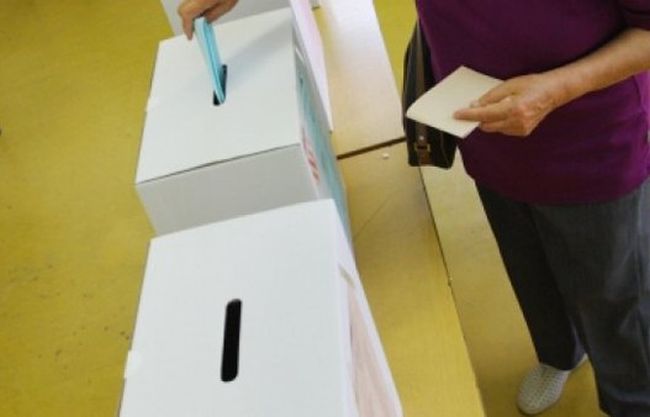Despite smaller turnout in relation to 2010, there was more invalid ballots
 In Bosnia and Herzegovina, in all the elections from 1996 onwards, hardly half the population had been voting. And besides the low turnout, the number of invalid ballots had usually been reaching close to 10%. This year’s turnout, according to the Central Election Commission, after the closing of pooling stations was at 54.14%, and decreased of 2% compared to 2010, when it was 56.3%. Although the turnout was smaller than four years ago, the percentage of invalid ballots increased from 6.88% to 7.69%, of which 3.94% were blank ballots. This percentage might increase, if we take into account that until October 16th, when Istinomjer obtained the data, only about 85% of the ballots were counted.
In Bosnia and Herzegovina, in all the elections from 1996 onwards, hardly half the population had been voting. And besides the low turnout, the number of invalid ballots had usually been reaching close to 10%. This year’s turnout, according to the Central Election Commission, after the closing of pooling stations was at 54.14%, and decreased of 2% compared to 2010, when it was 56.3%. Although the turnout was smaller than four years ago, the percentage of invalid ballots increased from 6.88% to 7.69%, of which 3.94% were blank ballots. This percentage might increase, if we take into account that until October 16th, when Istinomjer obtained the data, only about 85% of the ballots were counted.
The highest percentage of invalid ballots was registered in the elections for the Parliament of Bosnia and Herzegovina from the Federation of Bosnia and Herzegovina (9.14%), and this race registered the highest percentage of blank ballots (5.11%). The race for the Parliament of Bosnia and Herzegovina on the territory of Republika Srpska took second place, where there was 8.56% of invalid ballots recorded, while the percentage of blank ballots amounted. 4.83%. In the election of 2010, the highest number of invalid ballots was registered in the race for the Serbian member of the Presidency of Bosnia and Herzegovina, the second place took the race for the BiH Parliament in the RS where the percentage of invalid ballots was 7.4%.
When it comes to the race for Bosniak, Serbian and Croatian members of the Presidency, the percentages of invalid ballots were approximately the same (7.82% for the Bosniak and Croatian members and 7.57% for the Serbian member of the Presidency). The percentage of blank ballots in these races is 4.14% regarding the votes for Bosniak and Croatian members of the Presidency and 4.60% of the votes for the Serbian member of the Presidency. The percentage in 2010 was lower by 1% and totaled at 6.82%.
The election race, which is particularly interesting from the point of accusing the opposing party of electoral fraud, is the race for President and Vice Presidents of Republika Srpska. For those races, there were 5.41% of invalid ballots registered with 2.78% of blank ballots. This percentage has remained the same if we compare it with the previous elections in 2010 when it stood at 5.68%.
As for the entity parliaments; when it comes to the House of Representatives of the Parliament of the FBiH, there was 8.20% invalid ballots registered, including 4.24% blank ballots. For the National Assembly of Republika Srpska, there was 6.37% invalid ballots registered, including 2.78% of blank ballots. This electoral race recorded the largest increase of invalid ballots compared to 2010, when the percentage was much lower and amounted to 6.79%.
In most cantons of the FBiH, the percentage of invalid ballots was average, with the highest percentage in Una-Sana Canton (8.86% of invalid ballots and 3.42% blank ballots), Zenica-Doboj Canton (8.43% and 2.79%) and in Central Bosnia Canton (8.30% and 3.48%), while the cantons with the lowest percentage of invalid ballots were West Herzegovina Canton with 4.88% of invalid ballots, and 2.15% of blank ballots and Canton 10 with 6.15% of invalid ballot and 2.41% of blank ballots. However, if we compare these percentages to 2010, we will find that in the race for this level of government there was a significant increase in the percentage of invalid ballots. Four years ago, none of the canton recorded higher percentage than 6.88%. In the West Herzegovina Canton that percentage was 4.9%, similarly to this year.
This year’s elections are particularly interesting because of ballots that were registered as invalid by other criteria, when voters didn’t vote, but e.g draw something on their ballot. Political parties often accuse each other of adding votes by filling-in those specific invalid ballots. These include ballots from people, crossing their ballot, who refuse to vote for anyone. So far there were a total of 3.74% ballots like this registered, which means that they were 48.65% of the overall percentage of invalid.
The highest percentage of these invalid ballots occurred in Bosnia-Podrinje Canton (7.69%), followed by the Zenica-Doboj Canton with 5.62%, Una-Sana Canton with 5.44%, and the Central Bosnia Canton with 4.89% of such ballots. When it comes to the Parliament of BiH, the Federation of Bosnia and Herzegovina registered 4.04% of such ballots, and Republika Srpska registered 3.68%. In the race for the Federation’s Parliament there were 3.96% of the ballots, while in the race for the National Assembly of Republika Serbska 3.86% of such ballots was recorded.
It is interesting that the races that the parties traditionally highlight as the dirtiest and most vulnerable to electoral engineering, like the race for the Presidency and the President and Vice President of Republika Srpska, according to the ballots counted until now, share a smaller percentage of those ballots than the average; the race for Bosniak and Croatian members recorded 3.63% and the race for Serbian member amounted of 2.9%. The race for President and Vice Presidents of Republika Srpska had 2.68% of invalid votes, less than in any election race in this election.